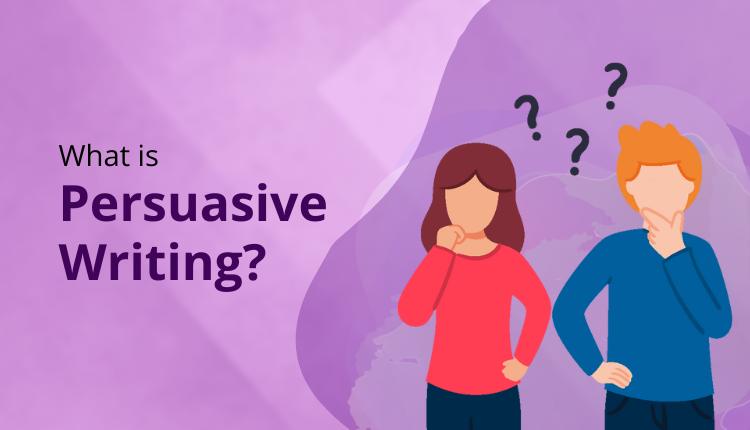What is Persuasive Writing? Understanding Its Key Elements and Technique

Introduction
Persuasive writing is a powerful tool that influences opinions and inspires action. Whether you’re writing an ad, essay, or speech, mastering this skill is essential. It’s not just about making arguments—it’s about connecting emotionally and logically with your audience. In this blog post, we’ll explore the key elements of persuasive writing, explores its importance, and share practical tips to strengthen your own persuasive skills. Get ready to unlock the secrets of effective persuasion!
What is persuasive writing?
Persuasive writing is a powerful form of communication used to convince the reader to take a specific side or action. It employs different techniques, including emotional appeal and rational thinking, to leave an impression.
This type of writing is evident in advertisements, editorials, and speeches. Writers carefully select each word and craft their arguments to deeply connect with their readers. By presenting stronger evidence and narratives people can relate to, persuasive writing attempts to interest readers and guide them towards change.
Contents
In venturing into persuasive writing, it is vital to examine its basic elements. Grasping the structure is the foundation for crafting compelling arguments that hold the reader’s attention.
Core elements are the cause of effective persuasion, and your message becomes more potent. Understanding their meaning will help improve your skills at influencing and convincing effective audiences. Each part is crucial in establishing how your thoughts are perceived and interpreted by other people.
Structure
The structure of persuasive writing is crucial for communicating your message effectively. The introduction appeals to the reader and has a good thesis statement. This lays the foundation for your argument.
After the introduction, each body paragraph should be on one point that supports your overall claim. Use evidence, examples, and argument-based evidence to back up the arguments. Have a strong closing statement in support of your stance and calling for action or opinion shift on the readers’ part.
Elements
Persuasive writing relies on a set of basic elements which make it all the more efficient. Its most significant building blocks are an argument, evidence, and appeal. Each plays a different role in shaping the viewpoint of the reader.
All these together form a good story that is engaging for the readers. Everything brought to perspective with a proper thesis statement, and accurate and factual information add authenticity. Emotional language can touch individuals emotionally, thus making the message enjoyable and more memorable to readers.
Significance of Persuasive Writing
Persuasive writing is incredibly effective in swaying minds and making decisions. From writing an article to delivering a speech, or an advertising campaign, being able to persuade can be a game-changer.
In this age of information overload, effective persuasive skills stand your message out. Not only does it convince people, but it also persuades them to take an action. Knowing how to master this skill can make your communication effective and build a good relationship with your audience.
Ethos, Logos, and Pathos in Persuasive Writing
Ethos, logos, and pathos are great tools for persuasion in writing. Ethos is credibility; it builds trust with your readers by showing you have authority or expertise on a subject. When your readers believe you’re an expert on what you’re talking about, they will be more apt to be convinced by your reasoning.
Logos is used to speak to reasoning and logic. It uses facts, statistics, and common sense in a bid to persuade the reader logically. Pathos is used to talk to emotions, using feelings like joy or fear to appeal to the reader’s heart in a more emotive level.
Strategies and Tips for Persuasive Writing
Effective persuasive writing begins with the understanding of your audience. Shape your message in their needs and interests, keeping it straightforward so that they connect with it. Stir their feelings with a story or an anecdote that they can relate to.
In addition, order your arguments in a logical fashion. Reinforce your arguments with compelling evidence, e.g., statistics or specialist opinion where relevant. Alternating between short and longer sentences can maintain the reader’s attention without overpowering it as the key points unfold. Lastly, end with a compelling call to action that encourages readers to do or believe something differently based on your message.
Examples of Persuasive Writing
Persuasive writing also appears in other types of multitudes, from advertising campaigns to opinion editorial. Consider a good advertisement directed towards the benefits of a product, calling on people to purchase. Such writing is likely to use emotional appeal and descriptive language to make their point.
Political speeches for influencing public opinion are another example. Politicians use persuasive methods to rally people behind their policies by citing facts and anecdotes that appeal to their interest and value.
Conclusion
Persuasive writing is an effective weapon that can shape opinion and stimulate action. If one knows its elements and tactics, one can master the art of persuasion. Be it writing an essay, a marketing strategy, or even social media content, using ethos, logos, and pathos will make your arguments stronger.
Real-life examples demonstrate how persuasive writing converts ideas into compelling stories. Through practice and focus, you can improve your ability in this powerful means of communication. Adopt these methods to be heard and bring about change through the written word.
